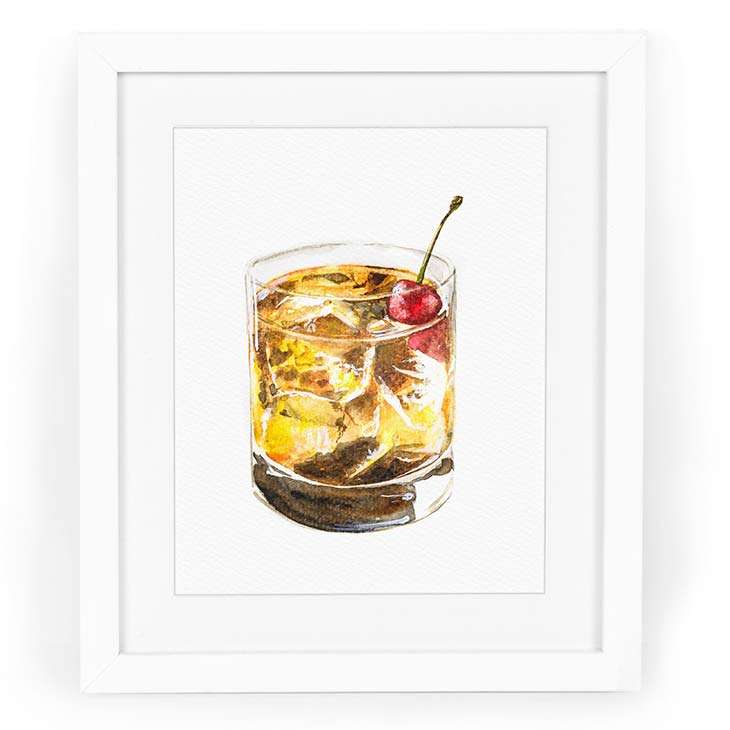The Importance of Whiskey Art in Celebrating Heritage and Craftsmanship in the Beverage Sector
The detailed connection between scotch art and the celebration of heritage and workmanship within the beverage sector can not be overstated. Via thoughtfully designed tags and bottles, whiskey brands encapsulate their historic roots and the artisanal abilities that define their manufacturing methods.
The Historic Roots of Whiskey
At the heart of bourbon's appeal lies an abundant tapestry of historic origins that map back to old civilizations. The beginnings of whiskey can be connected to the distillation practices of the Sumerians and Babylonians around 2000 BCE, where very early kinds of fermented grain beverages began to arise. It was in the Center Ages that the art of purification evolved substantially, specifically in Ireland and Scotland, leading to the creation of whiskey as we recognize it today.
The term "whiskey" itself derives from the Gaelic word "uisce beatha," indicating "water of life." This expression underscores the cultural relevance of bourbon in Celtic societies, where it was typically related to routines, parties, and communal bonding. By the 15th century, distillation ended up being an identified craft within reclusive communities, leading the way for the establishment of legal distilleries.
As trade paths increased, bourbon's appeal expanded, going beyond local borders and capturing the interest of lovers worldwide. Limited Edition. This historic trip shows not just the workmanship behind scotch production but also its essential role in social and cultural contexts, marking it as a significant drink throughout background
Artistic Expression in Branding
Scotch branding stands as a compelling crossway of creativity and commerce, where visual identity plays an essential role in shaping consumer assumption. The appearances of bourbon tags, product packaging, and advertising materials reflect not only the brand name's tale however also its core worths and heritage. Through creative expression, distilleries share a story that reverberates with customers, evoking emotions and sparking connections.
Making use of shade, typography, and imagery in branding offers to set apart products in a saturated market. Standard motifs might stimulate a sense of credibility and craftsmanship, while contemporary designs can symbolize development and forward-thinking. This critical artistic instructions enhances brand acknowledgment and commitment, enabling customers to forge an individual partnership with the scotch they pick.
Moreover, creative expression in branding often acts as a celebration of local heritage. Distilleries regularly integrate regional icons or historical recommendations right into their designs, producing a local color that welcomes customers to partake in a wider social experience. Ultimately, the artistry behind scotch branding not just boosts visual appeal however additionally enriches the general story of the brand name, promoting a deeper gratitude for the workmanship and heritage ingrained in each bottle.
Workmanship in Container Layout
The artistry evident in scotch branding prolongs past aesthetic identification to incorporate the workmanship included in bottle layout. Each container works as a vessel not simply for the spirit within, however also for the story it outlines its quality, beginning, and practice. The layout procedure needs careful attention to detail, as elements such as material, shape, and closure contribute considerably to the general perception of the whiskey.
Workmanship in container style includes selecting top quality glass that can improve the scotch's color and quality, while additionally supplying a tactile experience for the customer. The shape of the bottle must be both cosmetically attractive and functional, frequently reflecting the heritage of the brand name. Numerous distilleries opt for one-of-a-kind forms or embossed logo designs that evoke a sense of credibility and history.
Moreover, the tag style and typography play an important role in connecting the brand's narrative. Realism Art. A well-crafted container not just captivates the customer's eye however additionally strengthens visit our website the brand's dedication to quality and practice. This way, the workmanship of bottle design ends up being a vital facet of the whiskey experience, combining artistry with an extensive regard for heritage
Cultural Value of Scotch Art
Commemorating tradition and workmanship, the cultural relevance of scotch art goes beyond simple aesthetic appeals, linking with the social and historical stories of the regions from which it originates. Each container serves as a canvas, depicting the special stories, folklore, and practices that have actually formed regional whiskey-making practices. The elaborate designs often show the heritage of the distillers, including symbols and concepts that reverberate with the culture and worths of their areas.

Additionally, scotch art plays a vital duty in communal events and celebrations, acting as a substantial link in between people and their shared experiences. By appreciating the virtuosity in whiskey product packaging, consumers cultivate a much deeper understanding and regard for the craft, ultimately enhancing their enjoyment of the beverage itself.
Modern Trends in Bourbon Discussion
In the last few years, the discussion of bourbon has progressed to mirror contemporary tastes and fads while still honoring standard workmanship - Limited Edition. Distilleries are significantly concentrating on aesthetic aspects that boost the total drinking experience, connecting the space in between heritage and modernity
Cutting-edge container designs have emerged, commonly incorporating sustainable materials and creative labels that inform engaging tales. Many brands now work together with regional musicians, instilling their items with one-of-a-kind visual expressions that resonate with consumers. Additionally, limited-edition releases are typically packaged in collectible containers, including value and find appeal for lovers.

Conclusion
In conclusion, whiskey art serves as a crucial channel for sharing the heritage and workmanship fundamental in the beverage market. Via detailed branding, cutting-edge container styles, and culturally considerable creative elements, whiskey brand names properly recognize their customs and link with consumers.

Workmanship in bottle style involves choosing top quality glass that can improve the scotch's color and clarity, while additionally supplying a responsive experience for the consumer. In this way, the craftsmanship of container style comes to be an important element of the scotch experience, combining artistry with a profound regard for heritage.
In verdict, whiskey art offers as a crucial conduit for sharing the heritage and workmanship inherent in the beverage industry.